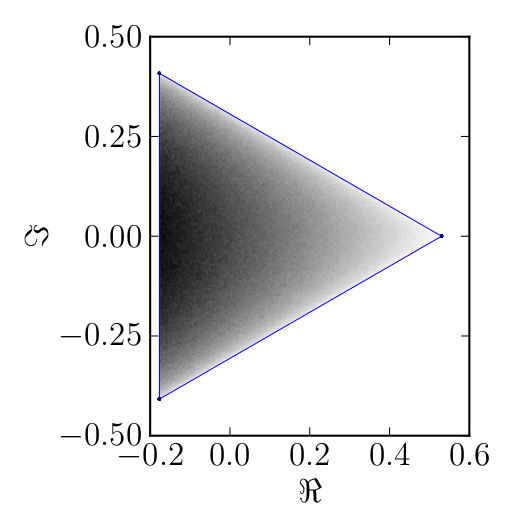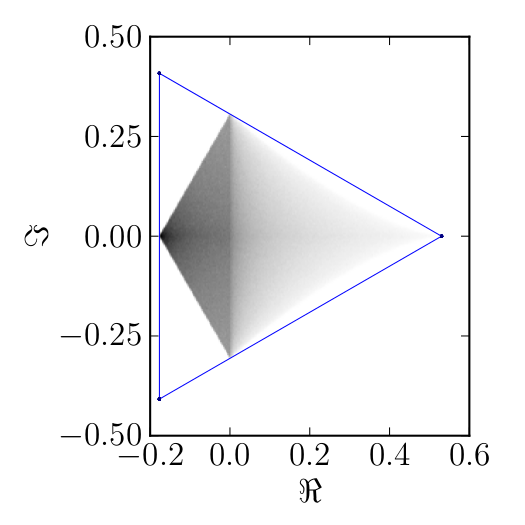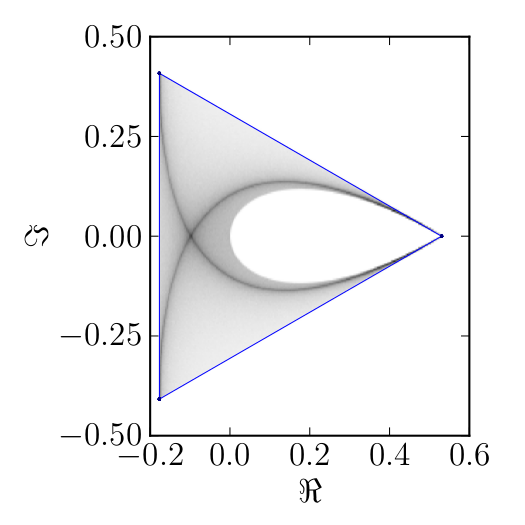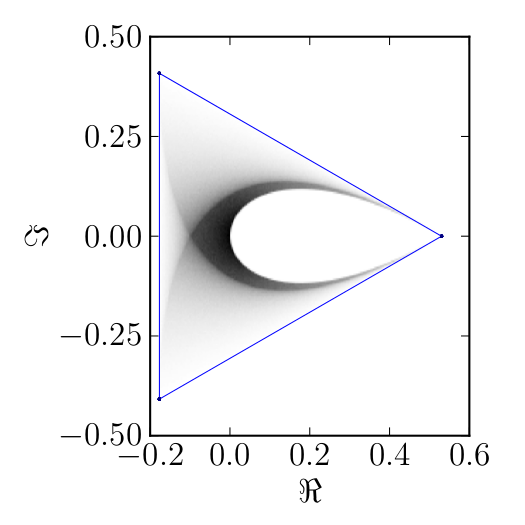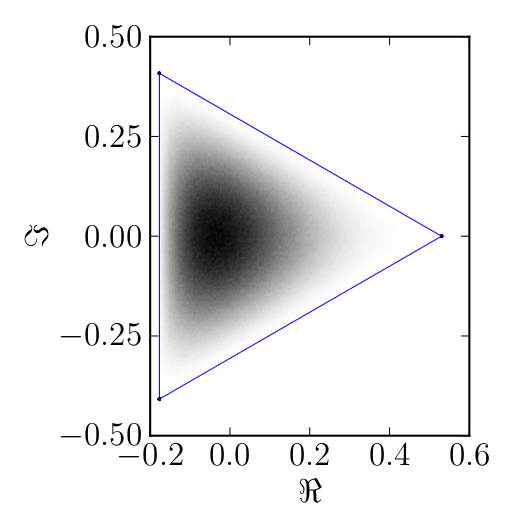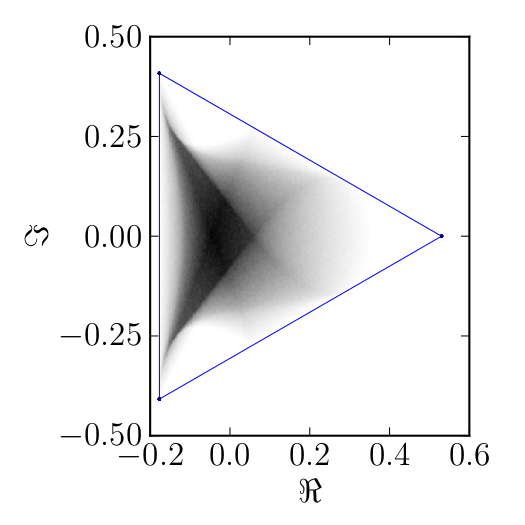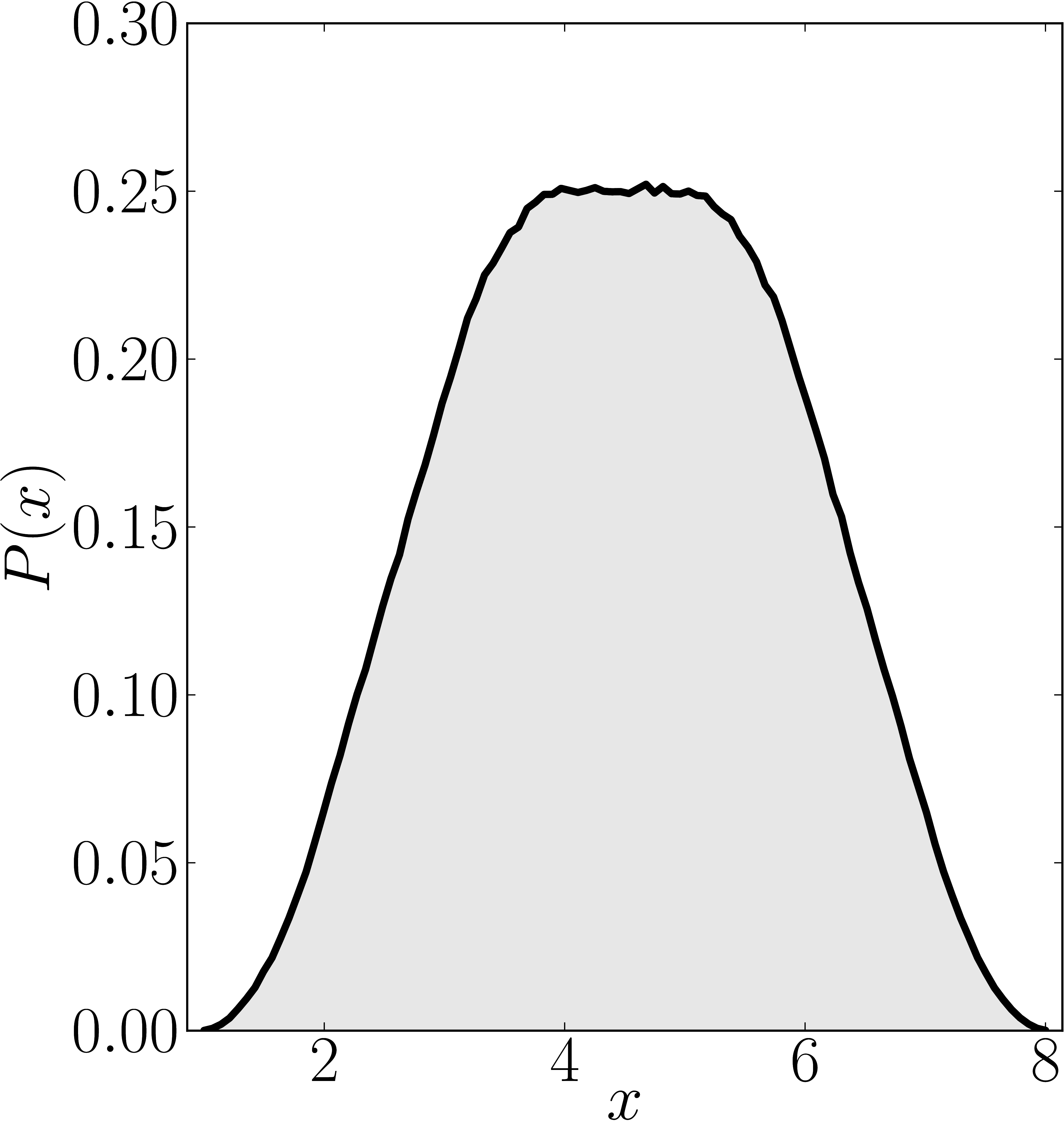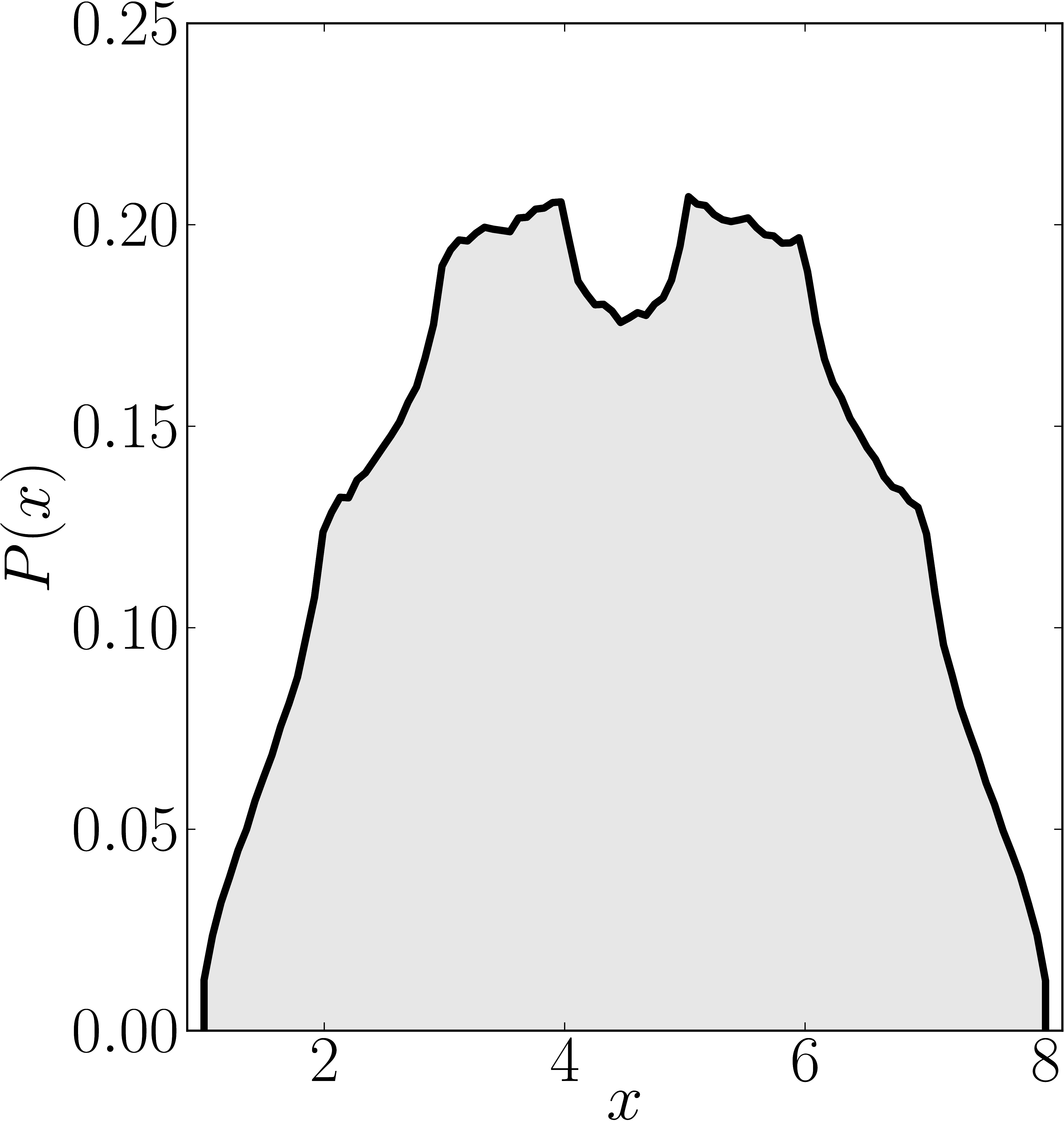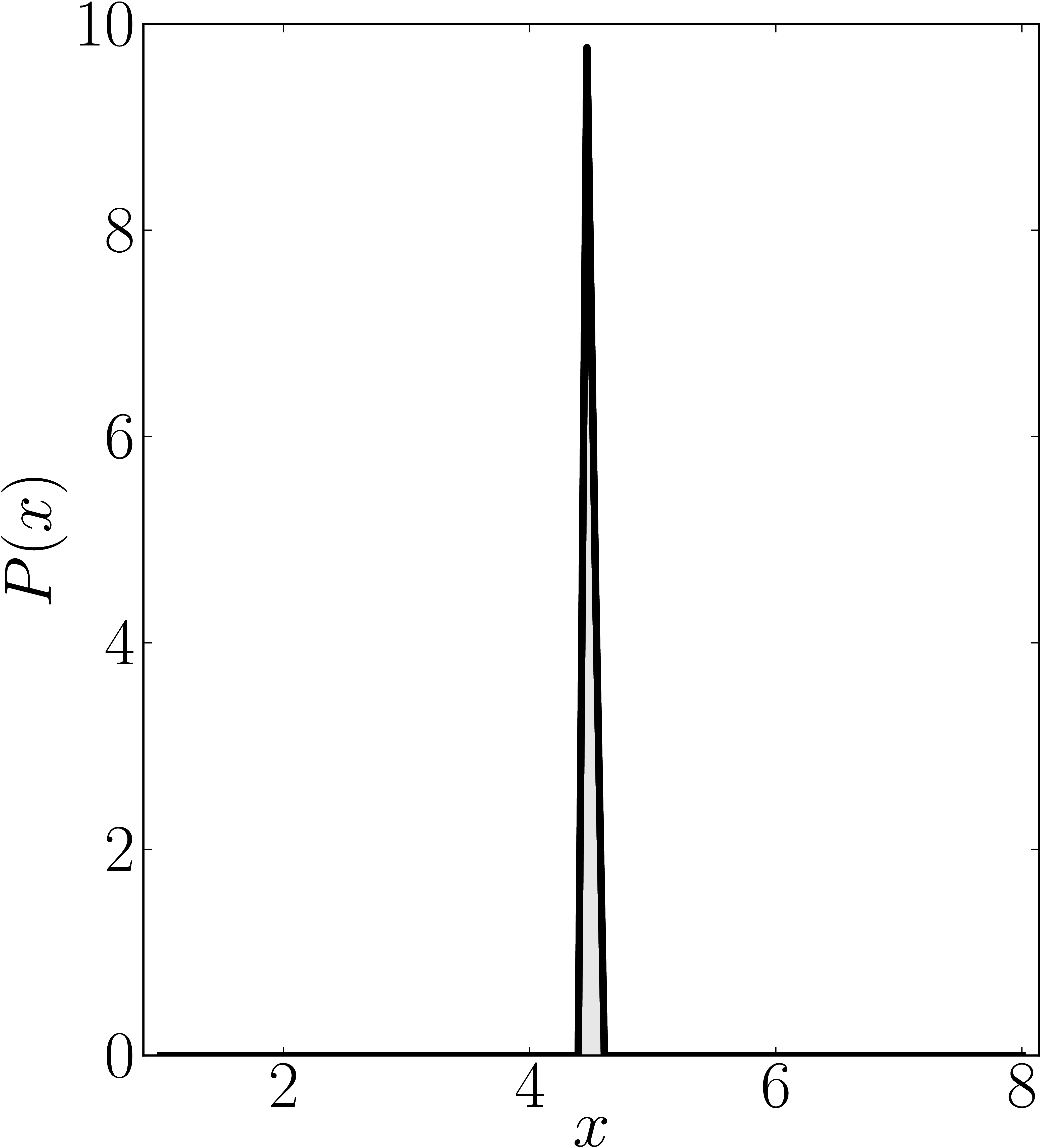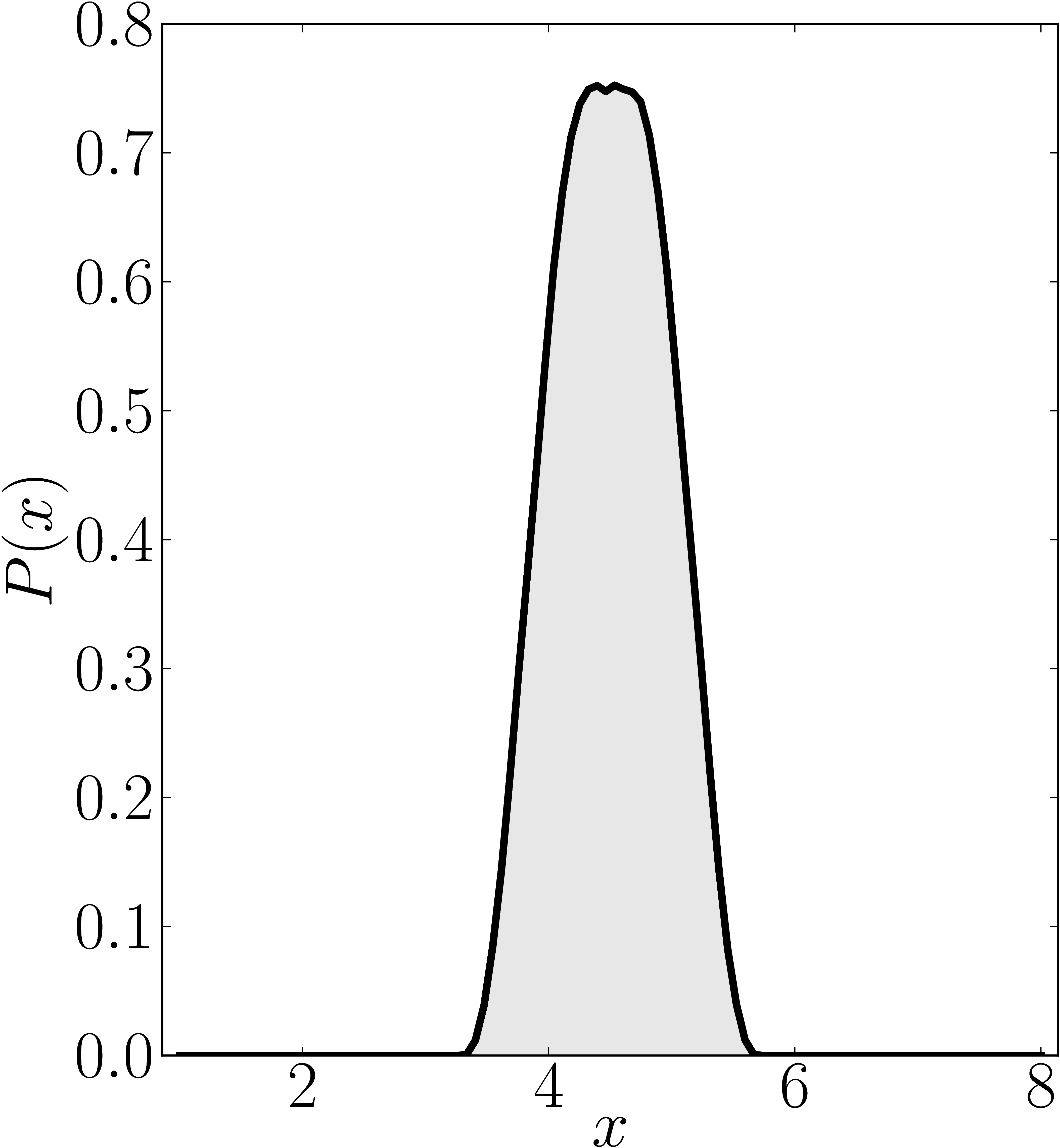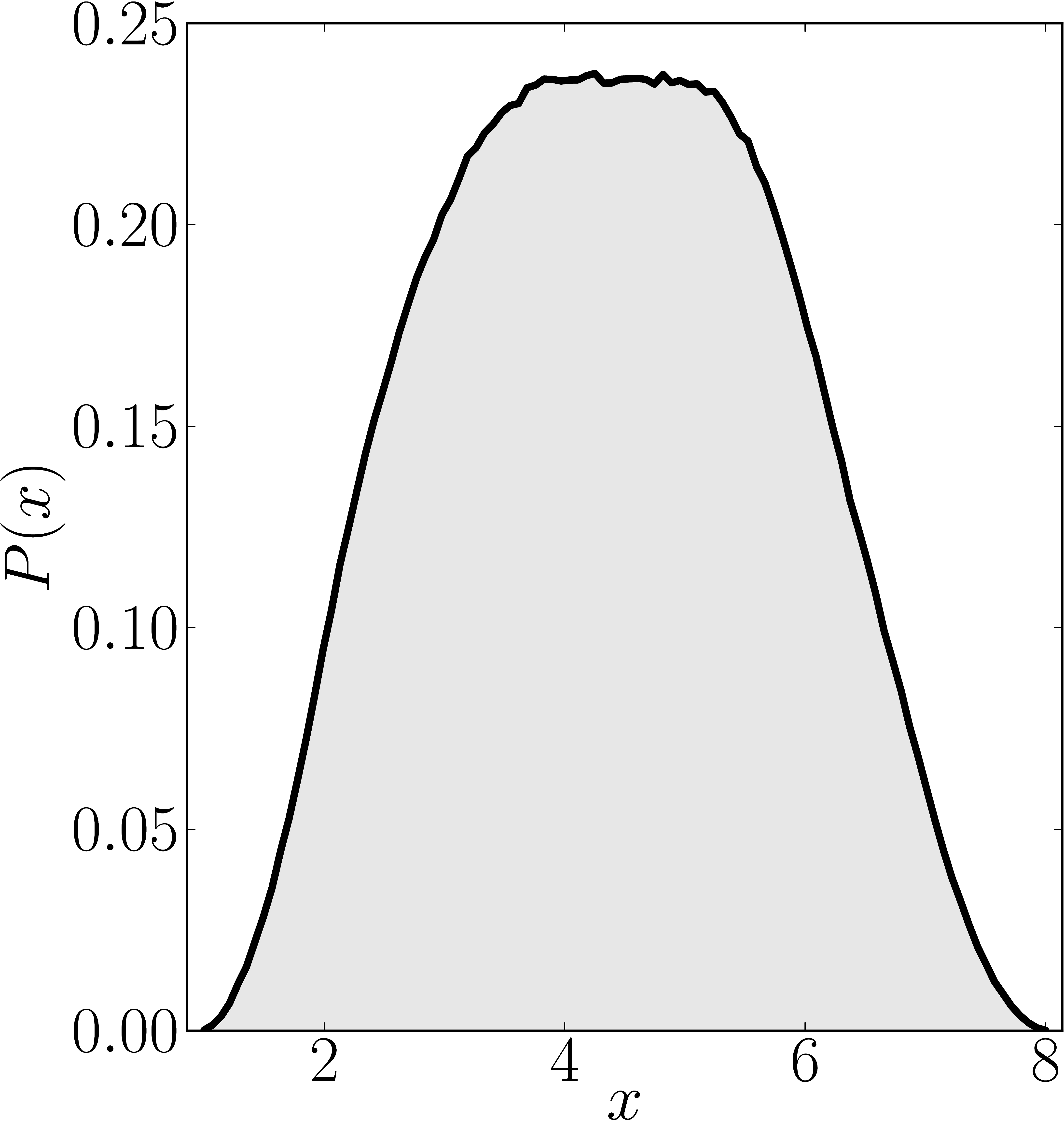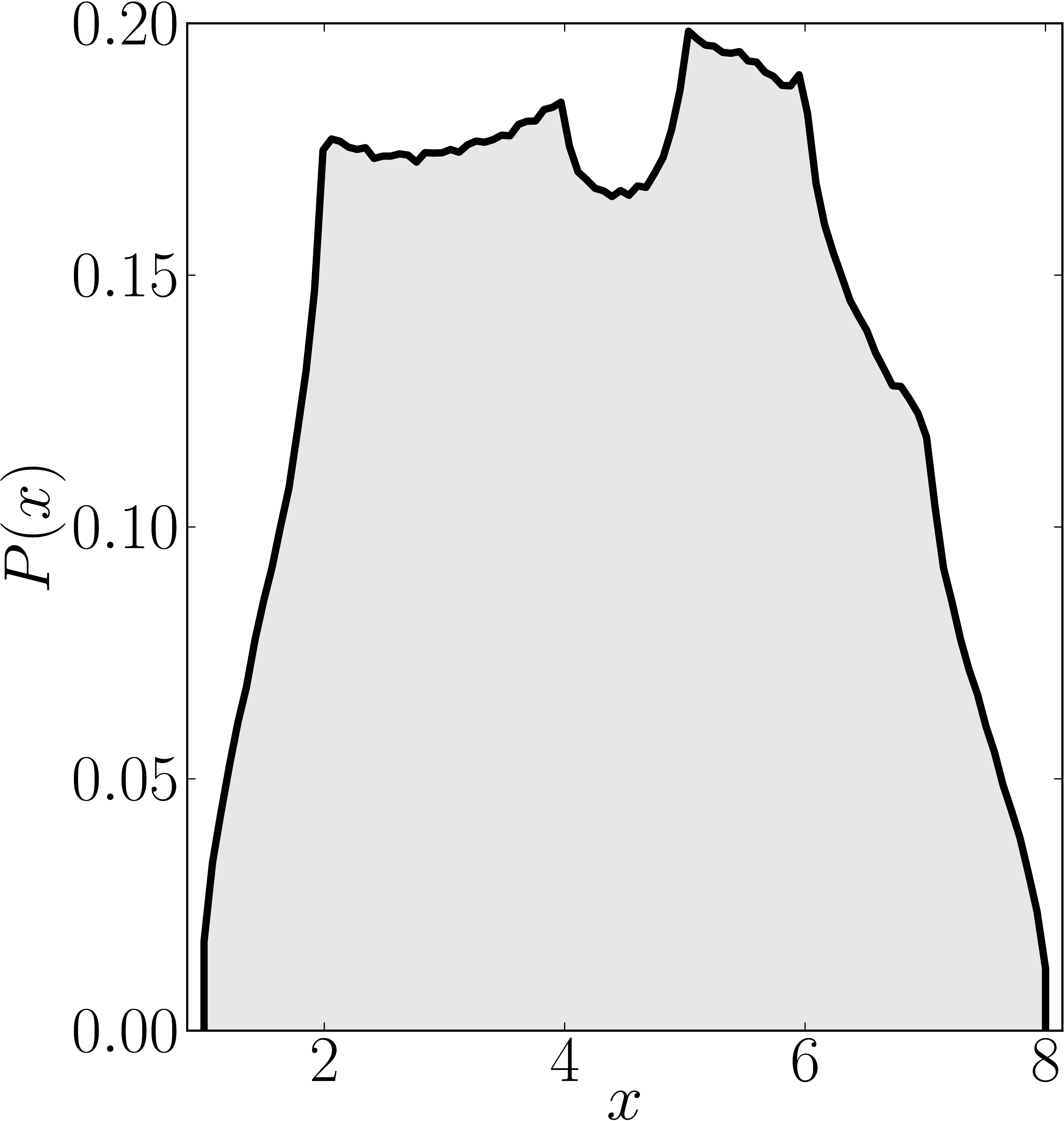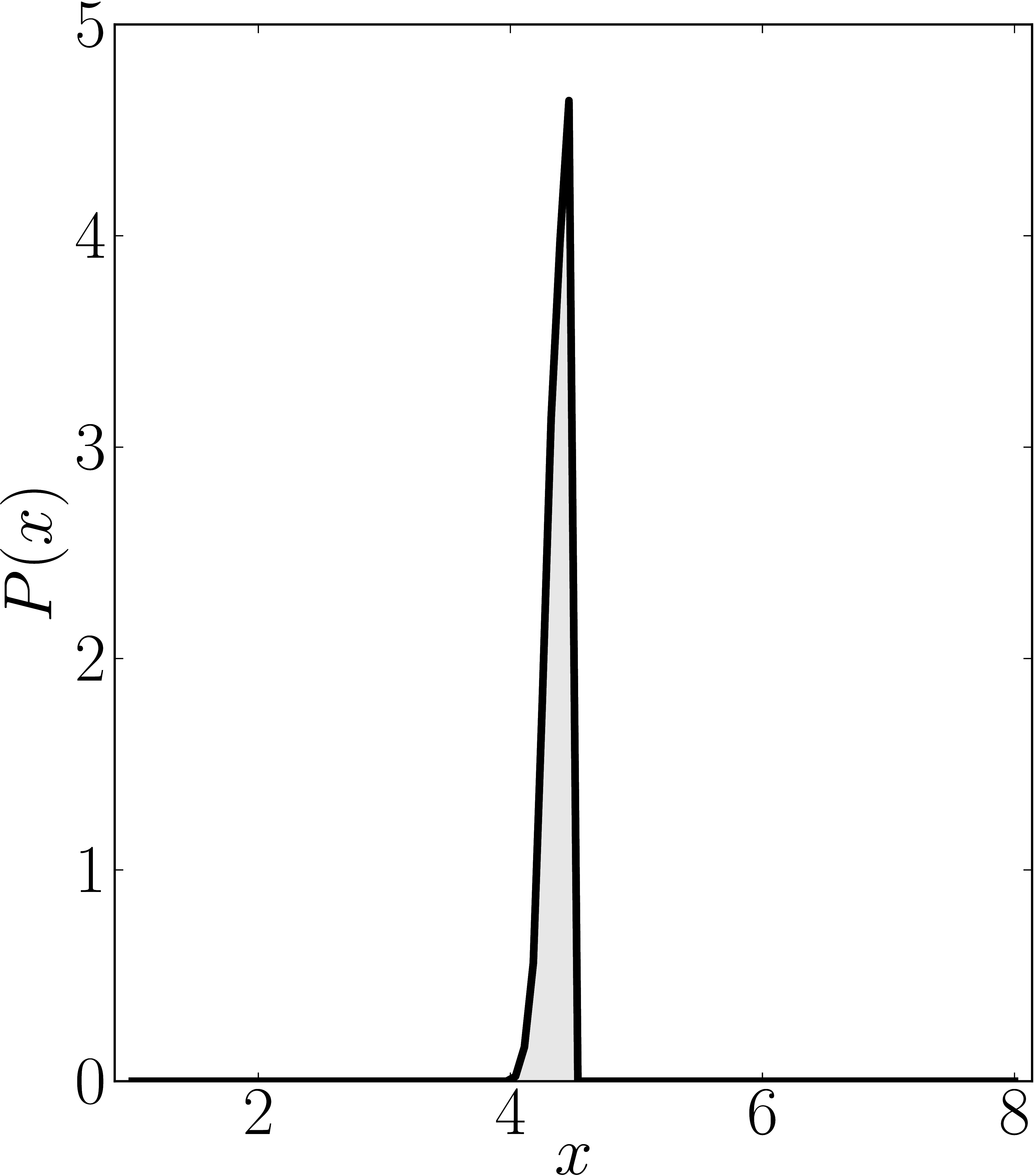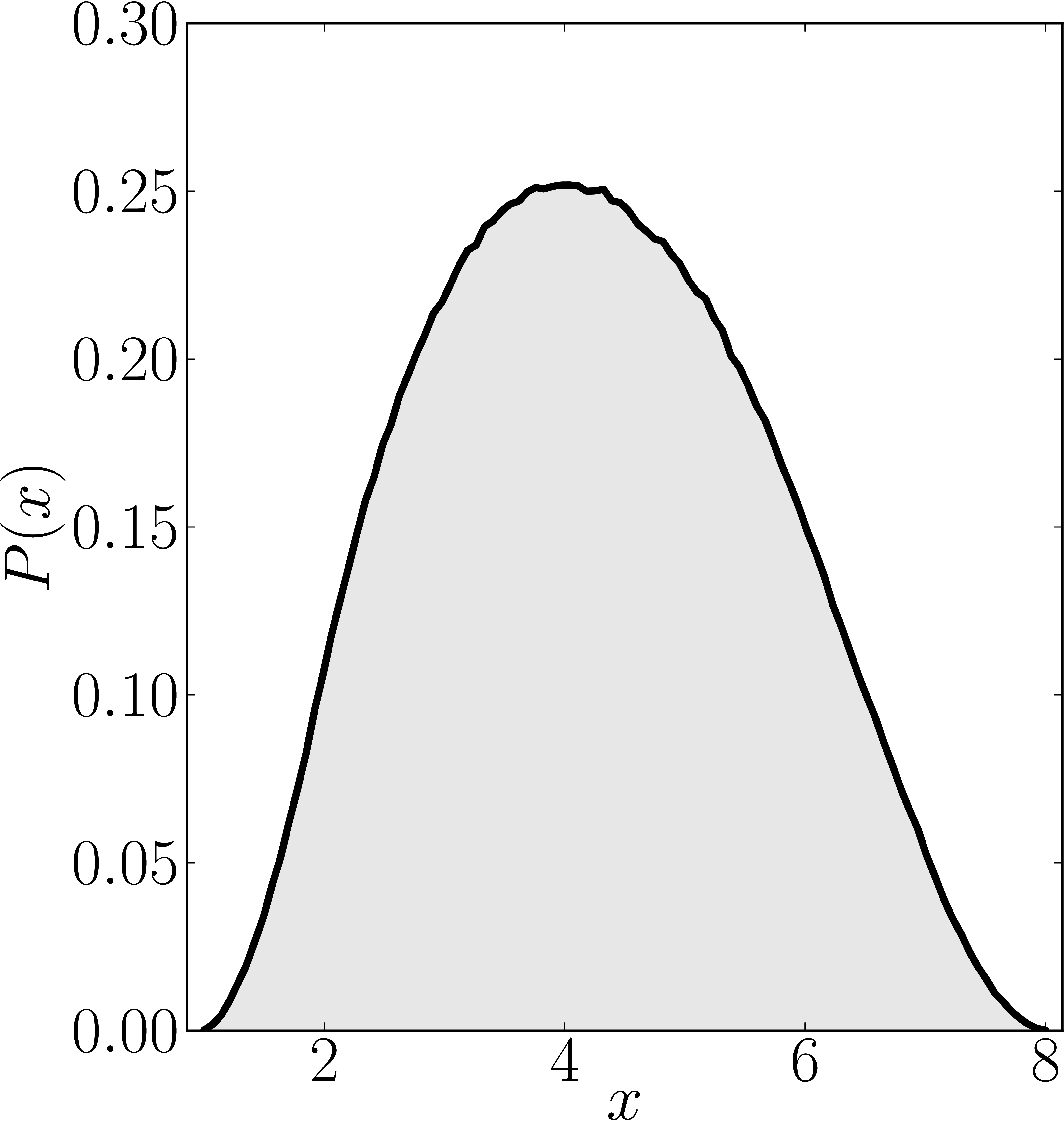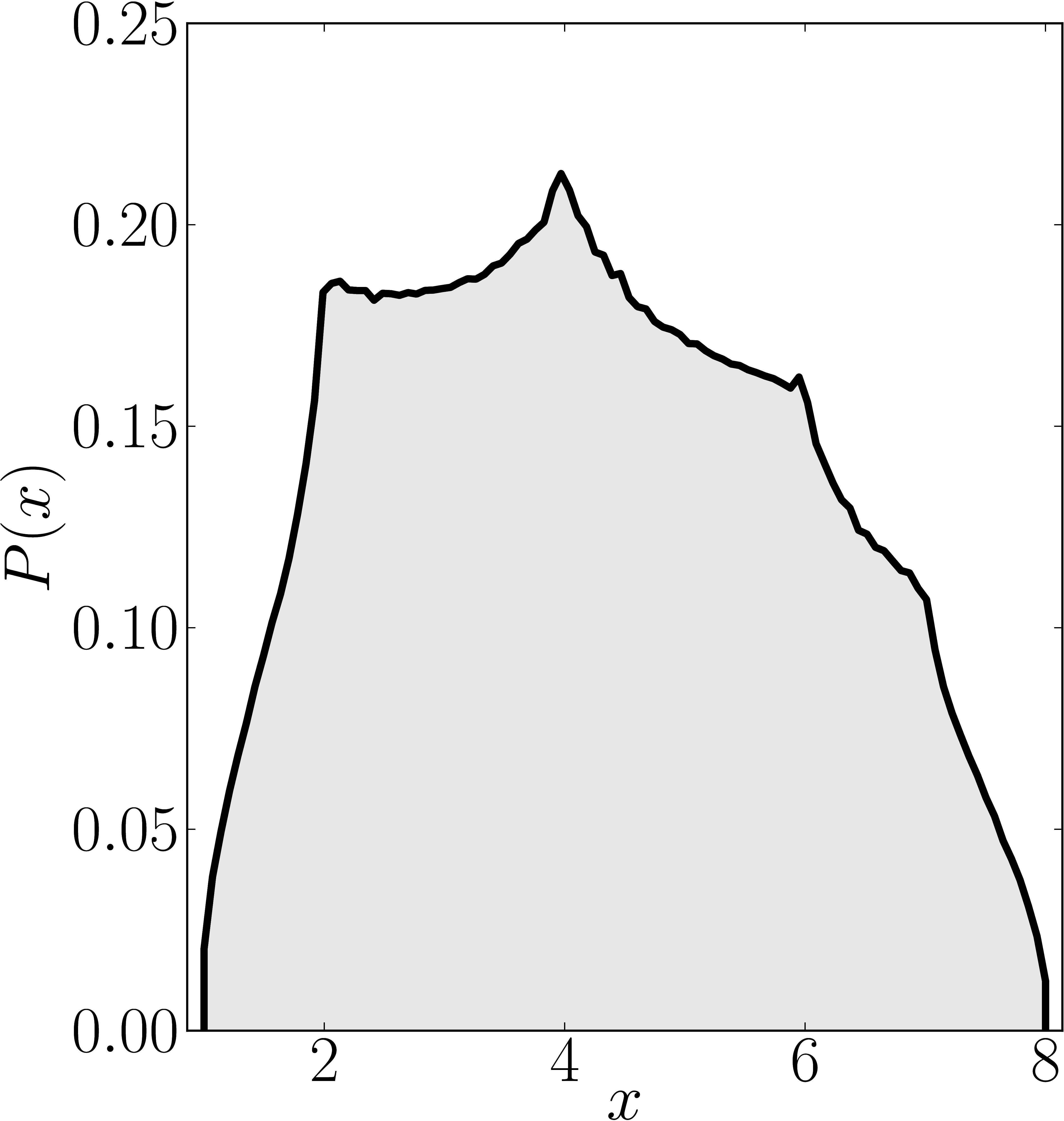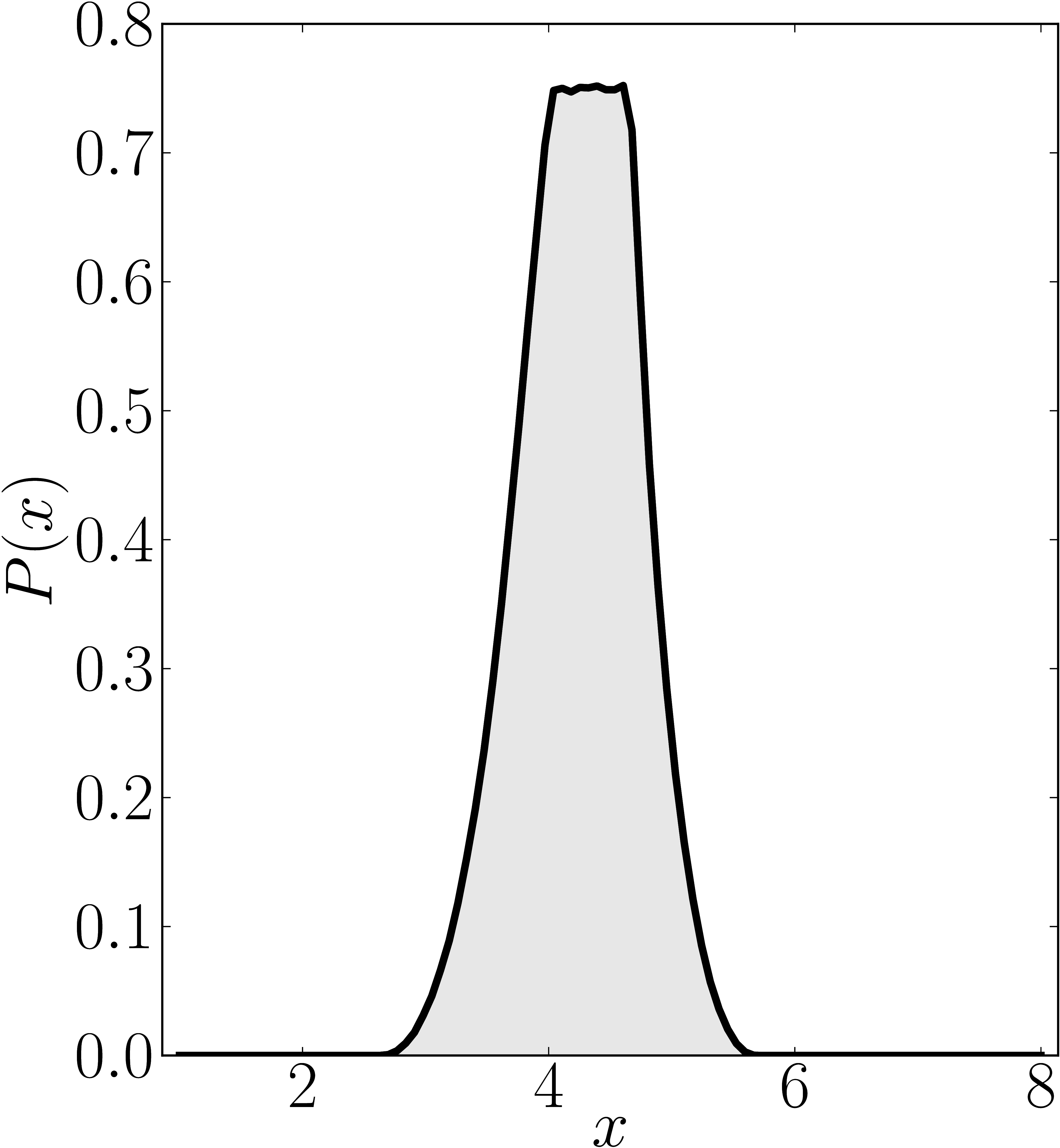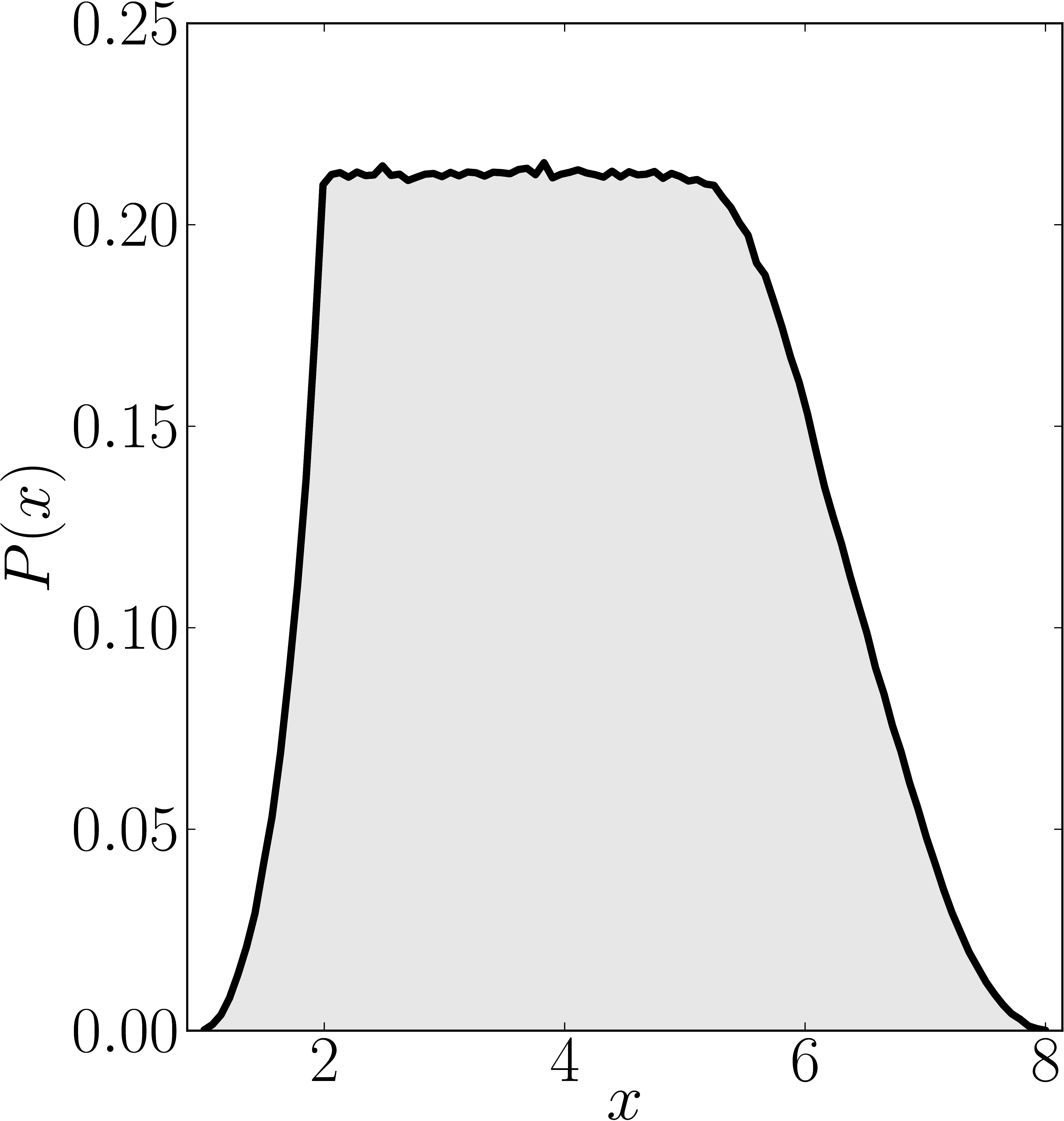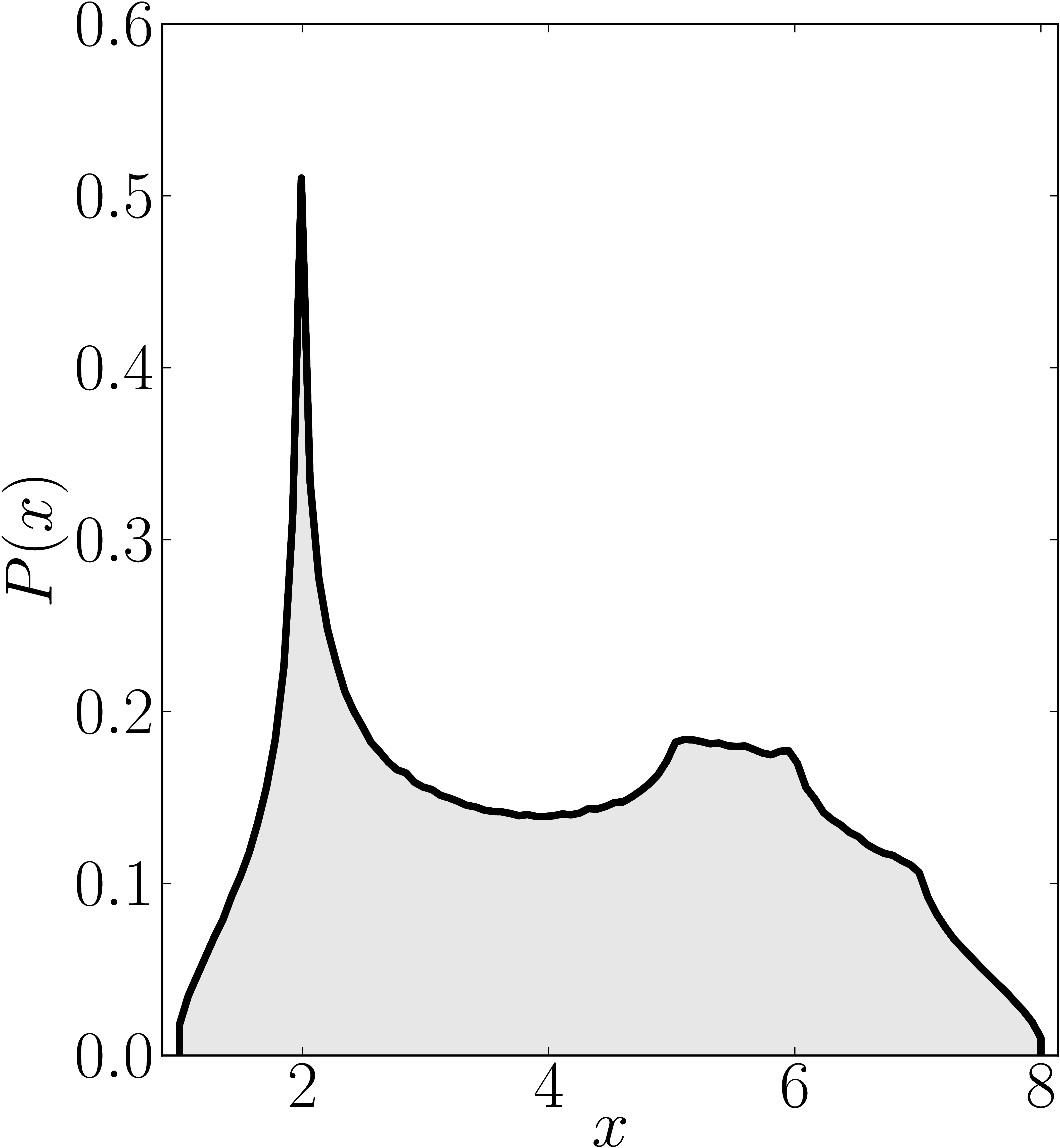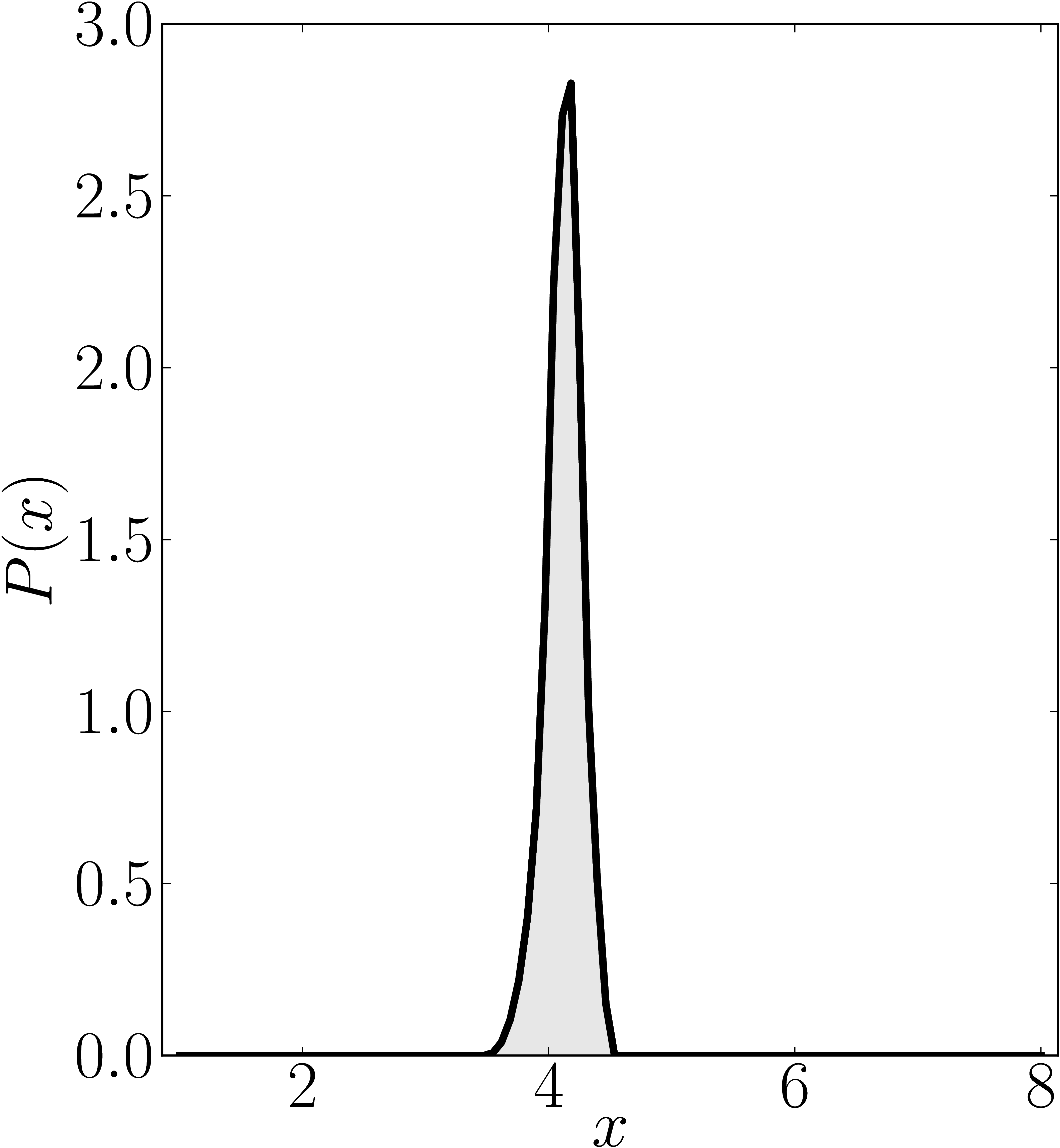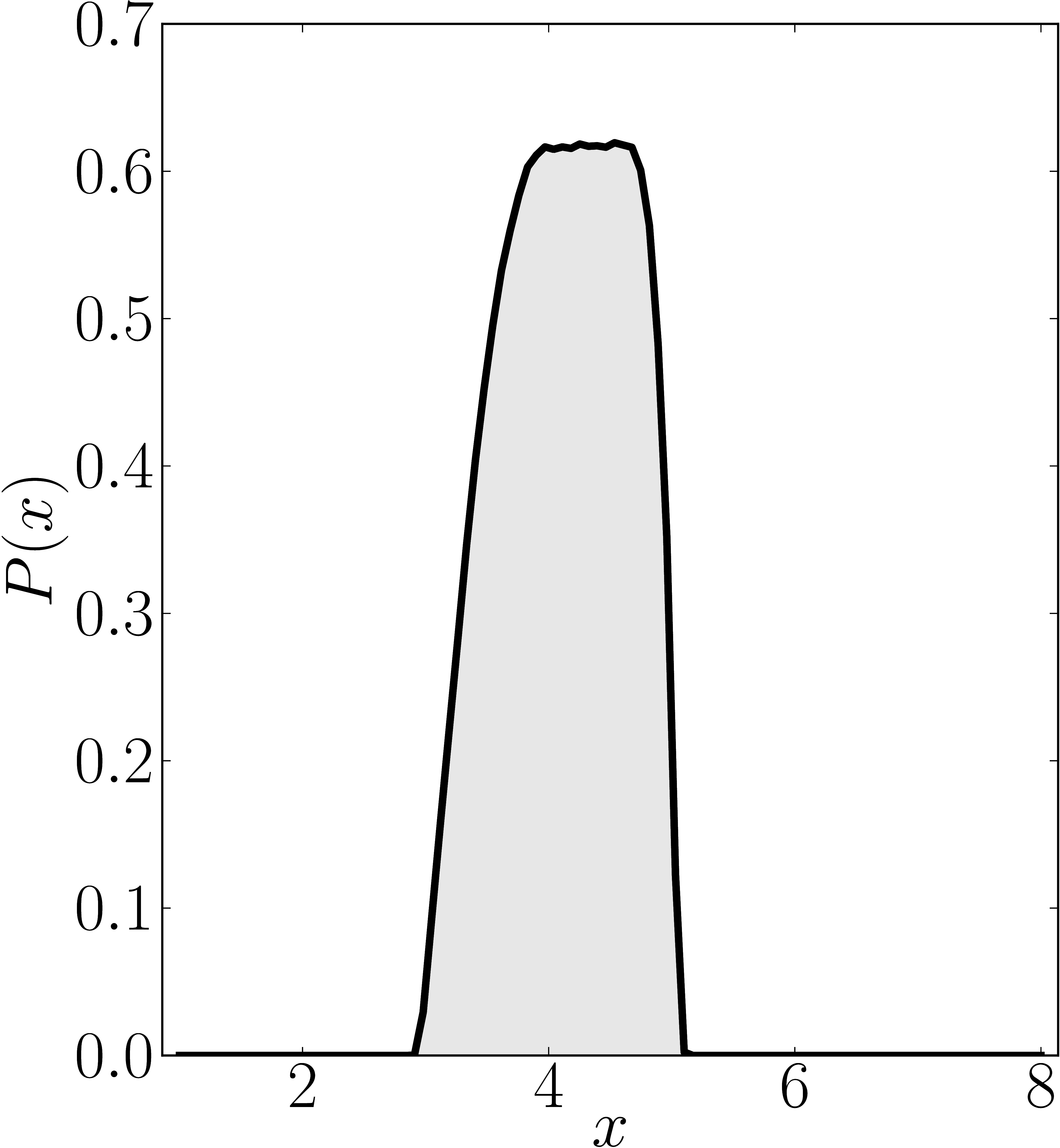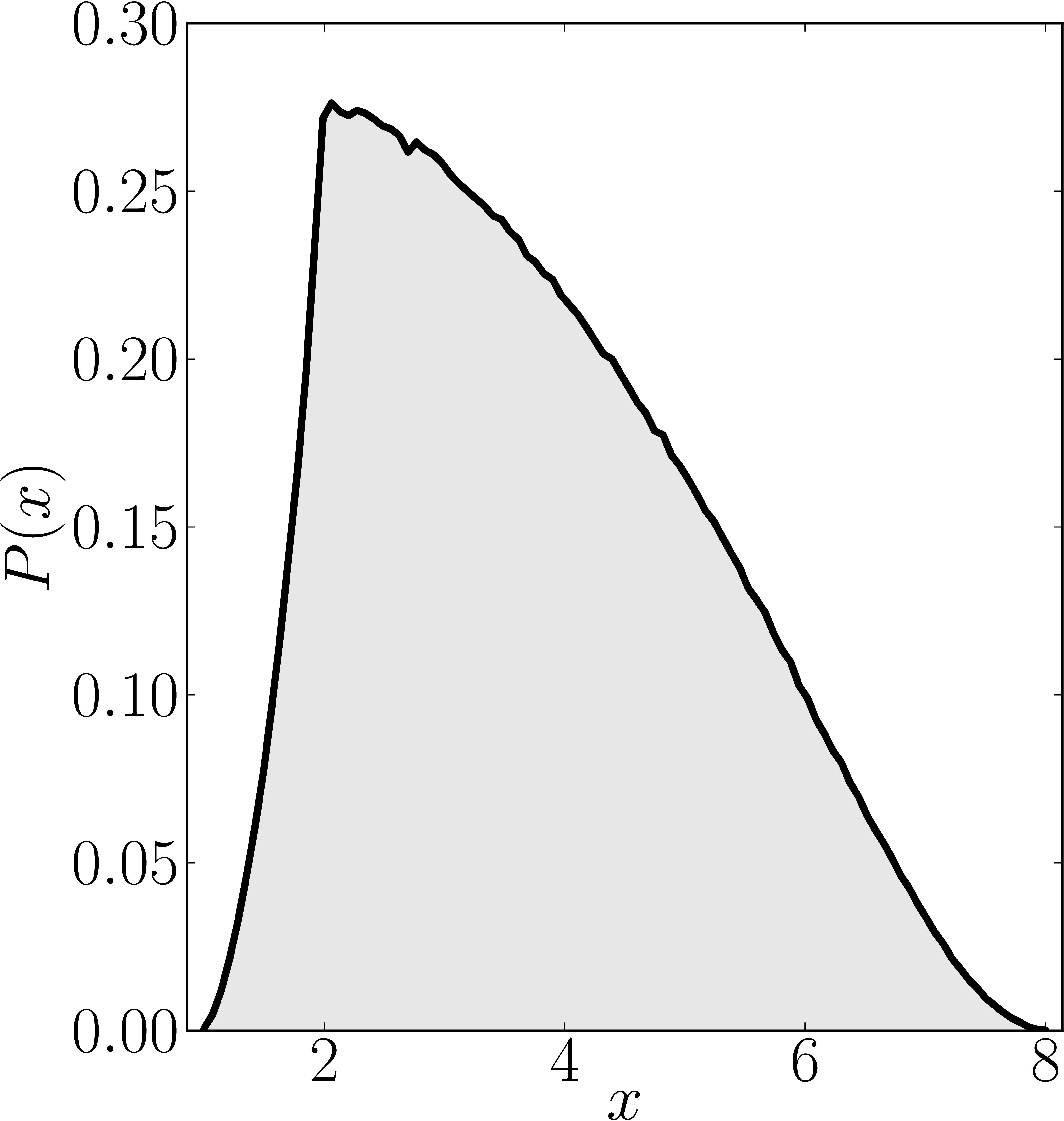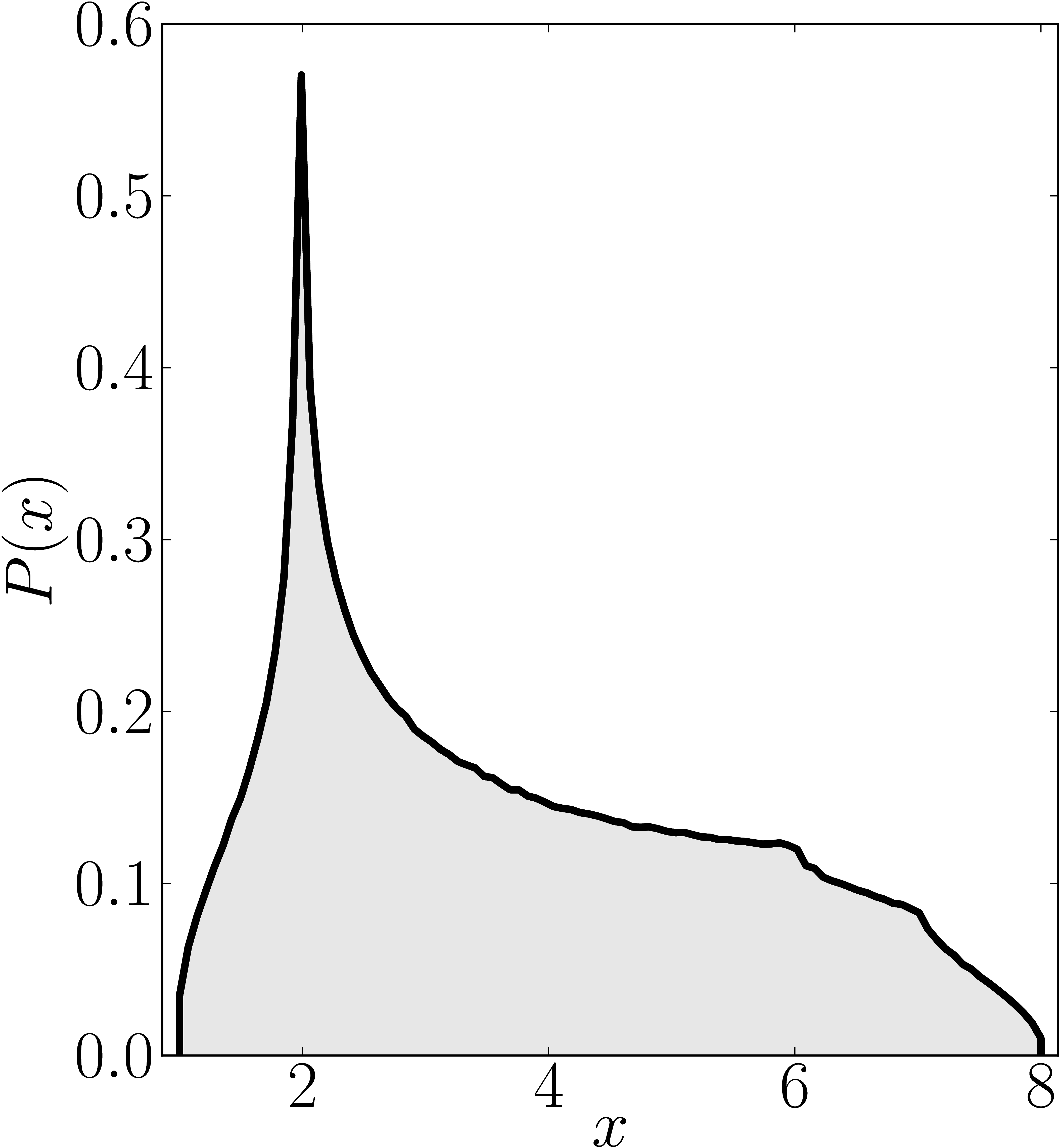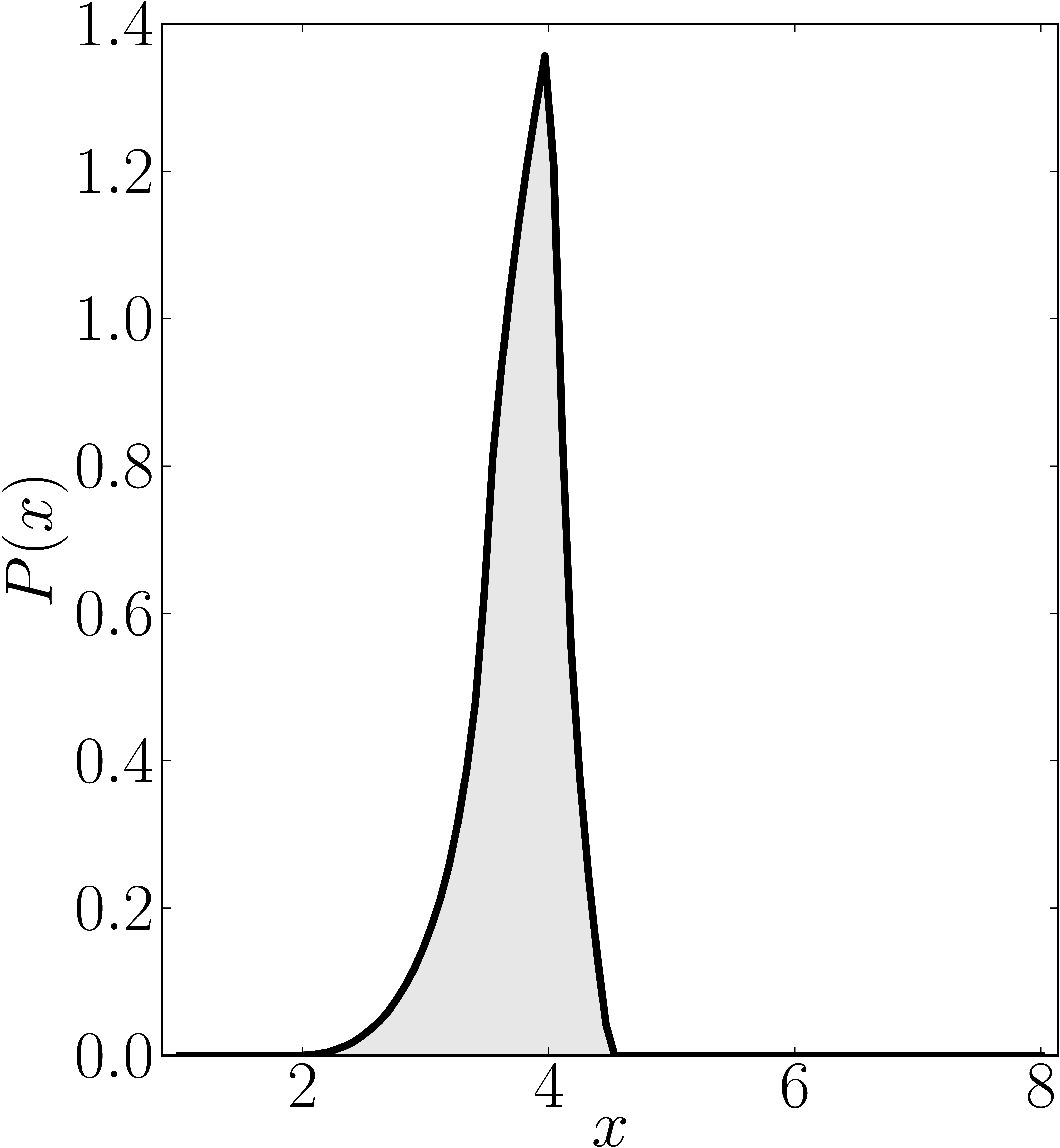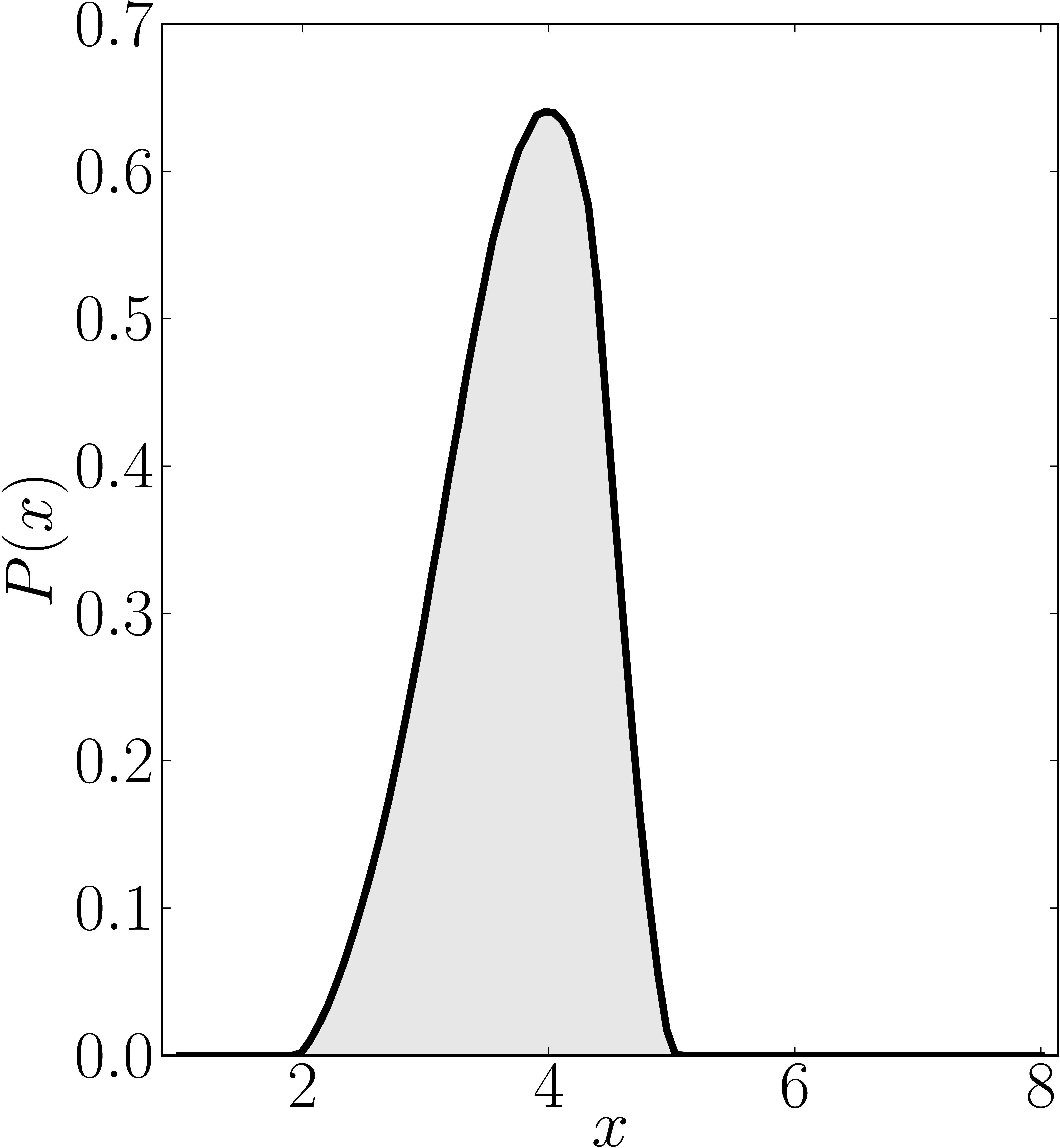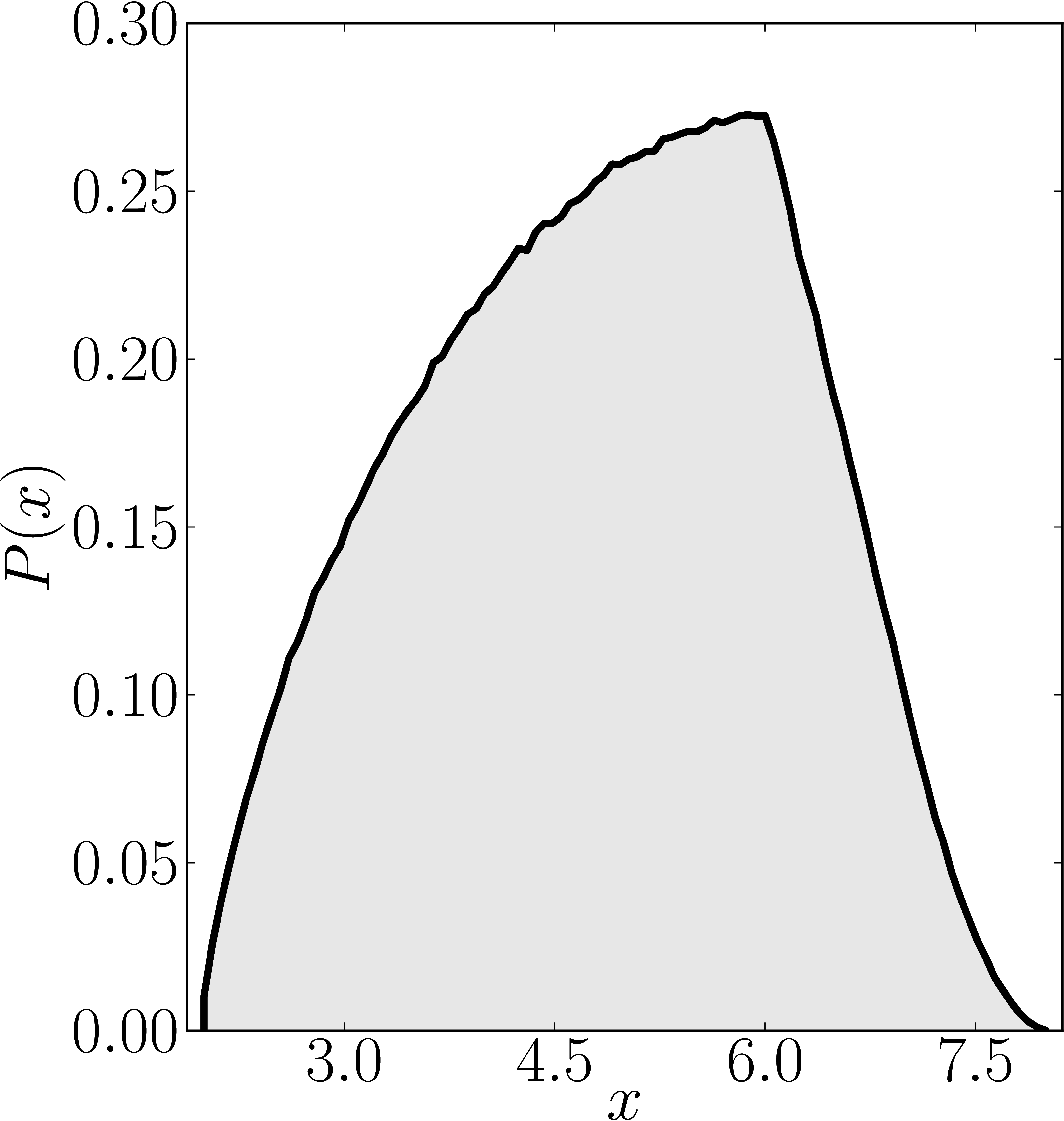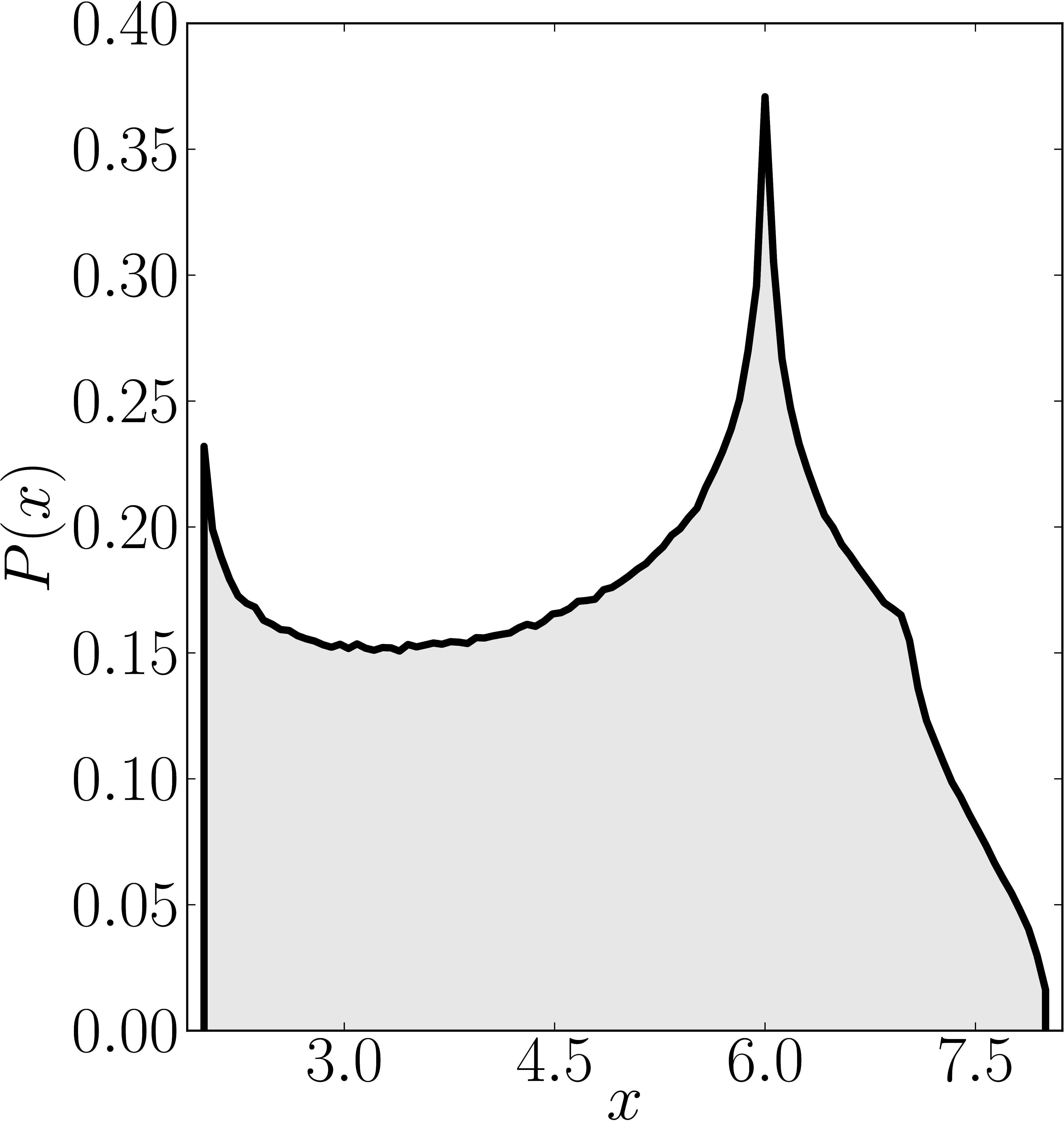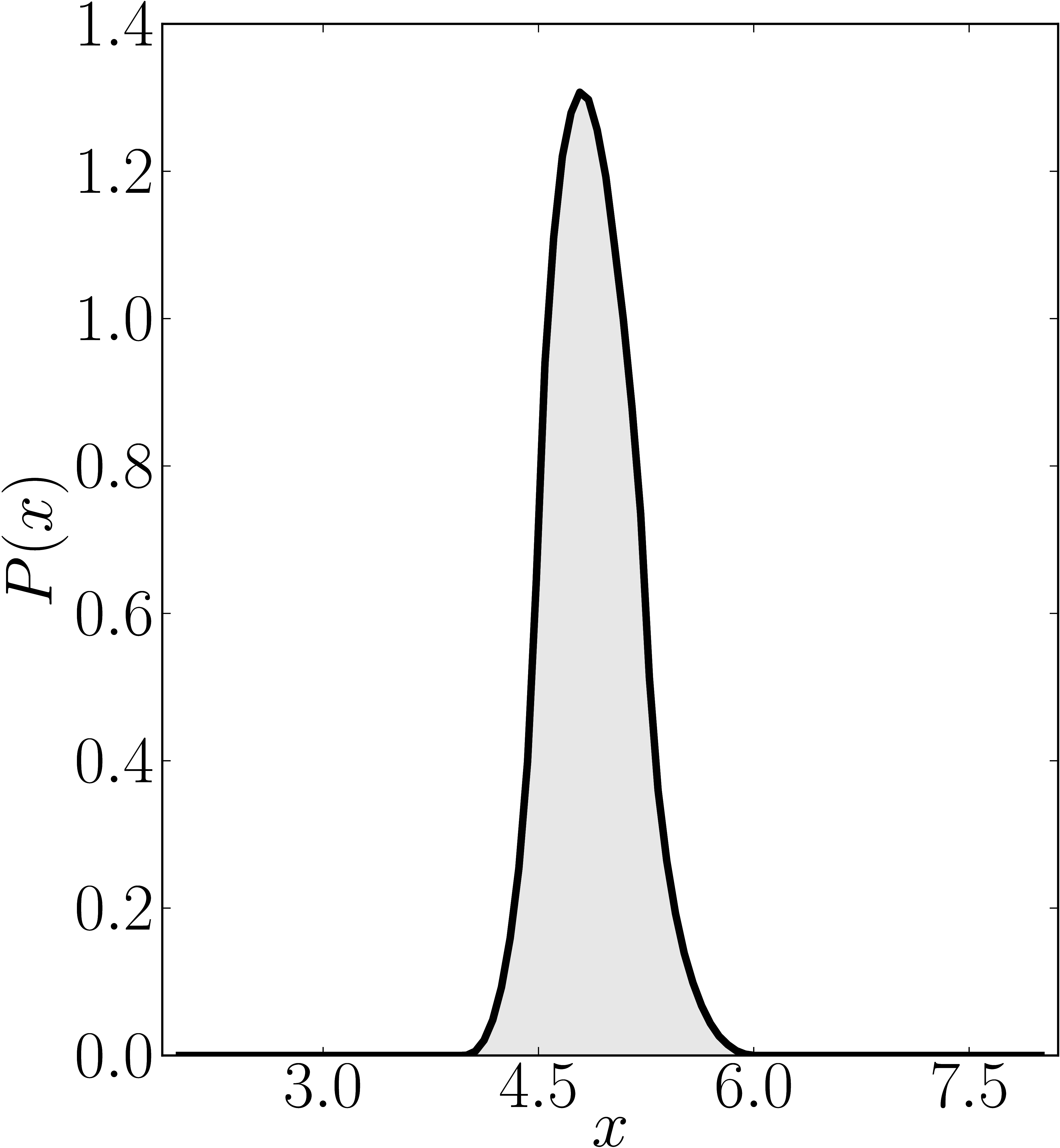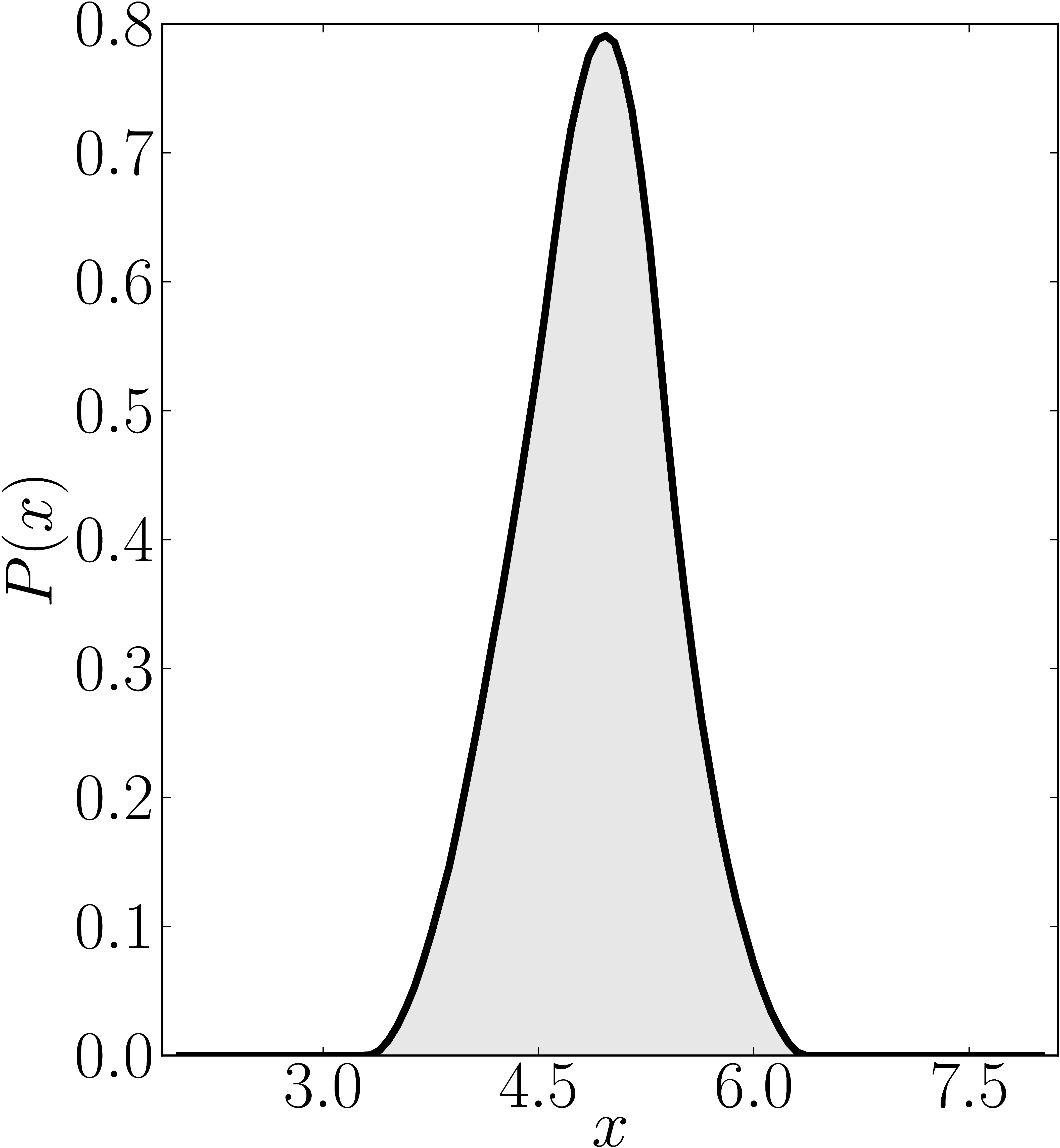Here we present some example restricted numerical shadow of a 8x8 matrix.
The matrix is $\mathrm{diag}(1, \ee^{\frac{2 \ii \pi}{3}}, \ee^{\frac{2 \ii \pi}{3}}, \ee^{\frac{-2 \ii \pi}{3}}, \ee^{\frac{2 \ii \pi}{3}}, \ee^{\frac{02 \ii \pi}{3}}, \ee^{\frac{-2 \ii \pi}{3}} 1)$. We present the (restricted) numerical shadow for the following cases:
all pure states (standard shadow), separately for complex and real states product states (product shadow), $\ket{\psi}_\mathrm{sep} = U_A \otimes U_B \otimes U_C \ket{000}$ GHZ-entangled states , $\ket{\psi}_\mathrm{GHZ} = U_A \otimes U_B \otimes U_C (\ket{000}+ \ket{111})/\sqrt{2}$, separately for complex and real statesso-called W-entangled states , $\ket{\psi}_\mathrm{W} = U_A \otimes U_B \otimes U_C (\ket{100}+ \ket{010}+ \ket{001})/\sqrt{3}$. Here $U_A$, $U_B$, $U_C$ are independent random unitary matrices sampled from $U(2)$ with respect to the Haar measure.
Standard numerical shadow with respect to complex states
Standard numerical shadow with respect to real states
Numerical shadow with respect to real separable states
Numerical shadow with respect to complex separable states
Numerical shadow with respect to GHZ-entangled states
Numerical shadow with respect to W-entangled states
The matrix is $\mathrm{diag}(1,2,3,4,5,6,7,8)$
Numerical shadow with respect to complex product $2 \times 2 \times 2$ states. N merical shadow with respect to real product $2 \times 2 \times 2$ states
Numerical shadow with respect to GHZ states Numerical shadow with respect to W states
The matrix is $\mathrm{diag}(1,2,2,4,5,6,7,8)$
Numerical shadow with respect to complex product $2 \times 2 \times 2$ states. N merical shadow with respect to real product $2 \times 2 \times 2$ states
Numerical shadow with respect to GHZ states Numerical shadow with respect to W states
The matrix is $\mathrm{diag}(1,2,2,4,4,6,7,8)$
Numerical shadow with respect to complex product $2 \times 2 \times 2$ states. N merical shadow with respect to real product $2 \times 2 \times 2$ states
Numerical shadow with respect to GHZ states Numerical shadow with respect to W states
The matrix is $\mathrm{diag}(1,2,2,2,5,6,7,8)$
Numerical shadow with respect to complex product $2 \times 2 \times 2$ states. N merical shadow with respect to real product $2 \times 2 \times 2$ states
Numerical shadow with respect to GHZ states Numerical shadow with respect to W states
The matrix is $\mathrm{diag}(1,2,2,2,2,6,7,8)$
Numerical shadow with respect to complex product $2 \times 2 \times 2$ states. N merical shadow with respect to real product $2 \times 2 \times 2$ states
Numerical shadow with respect to GHZ states Numerical shadow with respect to W states
The matrix is $\mathrm{diag}(2,2,2,6,6,6,7,8)$
Numerical shadow with respect to complex product $2 \times 2 \times 2$ states. N merical shadow with respect to real product $2 \times 2 \times 2$ states
Numerical shadow with respect to GHZ states Numerical shadow with respect to W states
